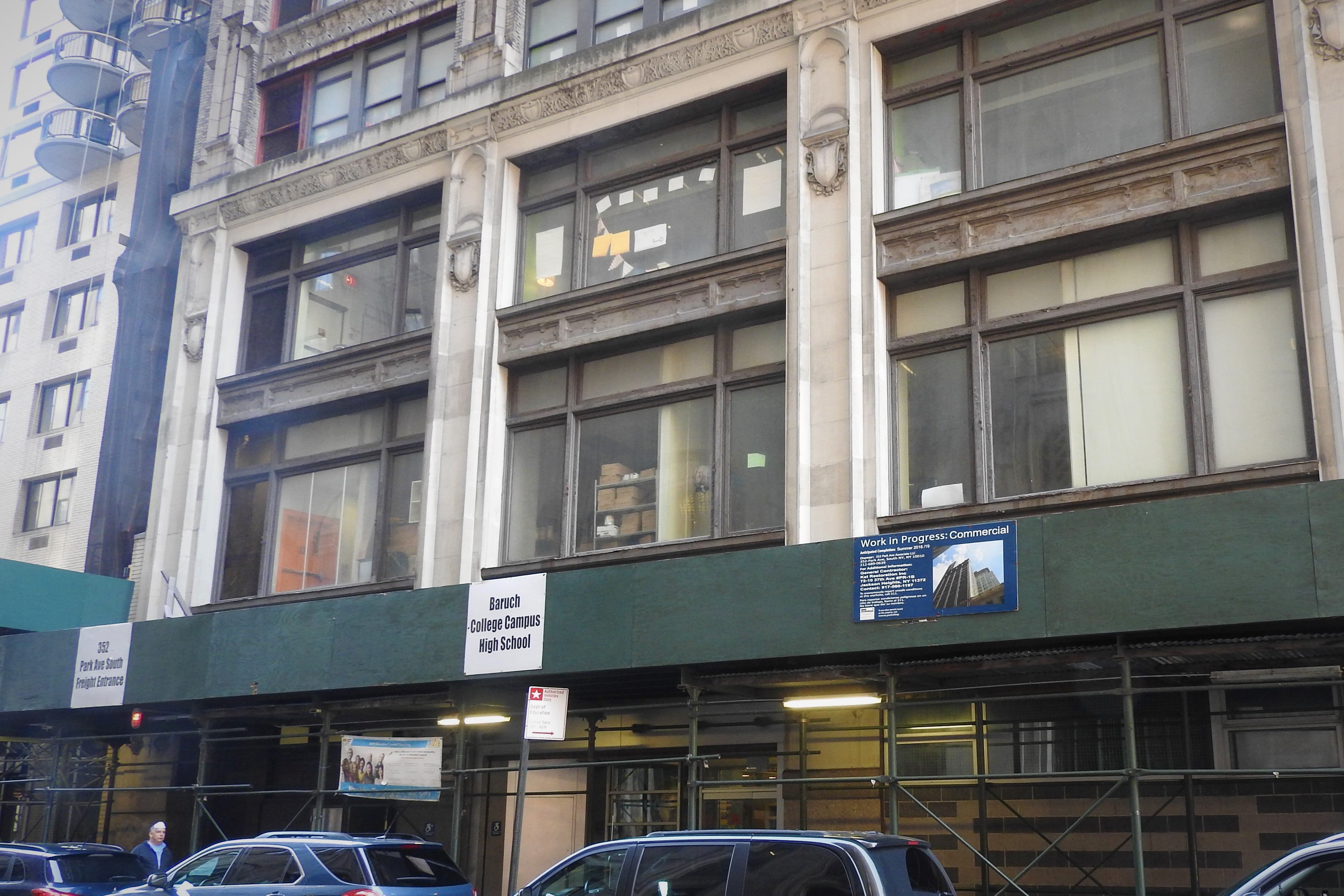Principals at some of Manhattan’s most sought-after high schools released forceful public statements on Tuesday supporting admissions changes with the goal of increasing student diversity.
The leaders of NYC Lab School for Collaborative Studies, Eleanor Roosevelt, and Baruch College Campus called on the city to eliminate rules that give preference to students who live in Manhattan’s District 2, which is whiter and more affluent than the city as a whole.
“The time for change is now,” Baruch Principal Alicia Pérez-Katz wrote in a letter to her school community, noting that the school cannot live up to its values if it continues to give certain students priority based on their home address.
“Removing the District 2 screen does not mean we lower our standards - rather - we raise them,” wrote Pérez-Katz, who has led the school for 17 years.
New York City schools are among the most segregated in the country, driven in part by the city’s complicated and competitive admissions process. Two of the principals stopped short of calling for an end to the use of screens, which allows schools to select students based on their academic records. But the principals’ push to end District 2 priority is noteworthy after years of limited action from Mayor Bill de Blasio’s administration on the issue of school segregation.
New York City’s high school choice system was designed to give students an opportunity to attend schools outside of their ZIP codes, but a handful of District 2 schools give admissions priority to students living within its district. That district comprises some of the city’s wealthiest neighborhoods, including the Upper East Side and TriBeCa.
District 2 priority is often credited with drawing more middle-class and white students to the public school system, and some parents have fiercely defended it. But the geographic preference is also blamed for deepening school segregation, and in 2019, a citywide task force appointed by the mayor recommended eliminating it.
“Admissions reform that aims to desegregate schools but does not address district-based geographic priority will fall short,” said Karuna Patel, Deputy Director of the Feerick Center for Social Justice, which has worked with the education department on ways to improve the city’s admissions system.
The principal at Eleanor Roosevelt, Dimitri Saliani, wrote that while the school has embraced efforts to foster equity and fight racism — making changes to its admissions policies, hiring more diverse faculty and staff, and adopting culturally inclusive curriculum — it hasn’t been enough to overcome the school’s geographic admissions priority.
“[W]e are at a place of stasis,” he wrote.
Real change demands the school “move away from the anachronistic District #2 priority that is a barrier to most students in NYC,” Saliani wrote. “The lack of diversity among students, faculty and staff is a disservice to our community as a whole.”
At NYC Lab School for Collaborative Studies, Principal Brooke Jackson called it her “responsibility and goal” that her students “receive an education that includes learning with and from a racially integrated student body reflective of NYC.” The high school enrolls almost 60% white students, almost four times the citywide average.
In calling for reform, Jackson said she wanted to support her students of color who are in a “glaring numerical minority.”
“It’s not OK for me, as school leader, to allow the phenomenon of a single Black student in their English course feeling responsible to represent their race and to educate their classmates,” she wrote. “Citywide access would meaningfully shift the racial demographics of Lab.”
Jackson told Chalkbeat she has lobbied the education department internally for years to drop the admissions priority. While principals have latitude to set most of their own admissions criteria, she said her requests have gone nowhere.
On Tuesday, a spokeswoman with the education department did not answer questions about who has the authority to eliminate it.
“I’ve asked all these people, ‘Take it out,’” Jackson said of her conversations with city officials about geographic priority. “And they’re like, ‘We don’t have the authority.’”
In the meantime, she has tweaked the school’s selective admissions criteria and started offering admissions preference to students from low-income families in the hopes of creating a more diverse school. With the District 2 priority in place, the school’s demographics still haven’t budged.
Advocacy from her own students, and this summer’s protests against police brutality and racial injustice, convinced Jackson to speak up publicly.
“I just personally felt very hypocritical,” she said. “The school that I’ve loved so much and invested my whole professional life in stands in contrast to the kind of justice and access that we’re all advocating for.”
In addition to the District 2 priority, Lab, Baruch, Eleanor Roosevelt, and School of the Future use competitive “screens” to admit students. New York City has a greater share of screened schools than anywhere else in the country, and Black and Latino students are underrepresented at those schools.
Due to the coronavirus pandemic the admissions process will have to look much different this year, since some of the most commonly used screens are not available. The education department eliminated the use of attendance, and traditional grades were not issued last year. The state, meanwhile, canceled standardized exams.
But de Blasio has stalled on issuing guidance to school leaders and families about how — and whether — screens will be used.
Many parents have advocated to keep them in place, arguing they benefit high-achieving students. But students and other integration advocates have led a grassroots effort to eliminate the competitive process.
Katie O’Hanlon, a spokesperson for the education department, said the city will share information about this year’s admissions process “soon.” She also emphasized that the city has not expanded the number of screened schools under de Blasio’s tenure.
“We regularly work with school communities to develop policies that reduce barriers and are driven by the best interest of all of our students,” she said.
School of the Future Principal Stacy Goldstein previously told Chalkbeat she’s personally in favor of eliminating screens, but wants to work with her school community before pursuing any specific changes. At Lab, Jackson told Chalkbeat she would back a citywide plan to eliminate admissions screens — not just at her school.
“I am in favor of getting rid of all screened schools and would gladly fall in line,” Jackson said.
While waiting for the mayor to decide what the admissions process will look like this year, Jackson said eliminating the District 2 admissions priority would be a positive first step.
“While we await further guidance on the bigger picture, this is just an easy and very symbolic move,” she said. “My school should not be subject to a geographic screen.”








